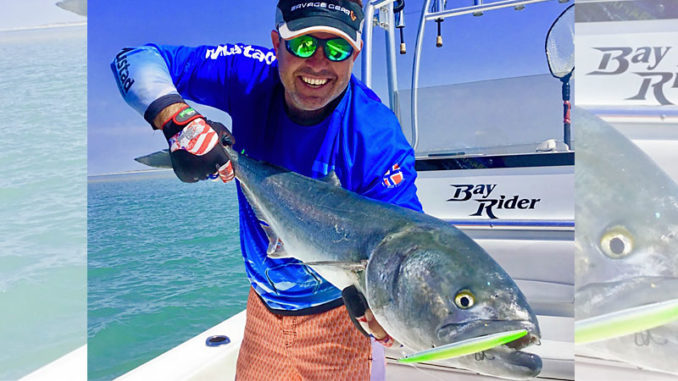
Strong terminal tackle is required for 8- to 20-pound chopper bluefish
April is when fishing along North Carolina’s central coast starts to heat up.
At Cape Lookout, water temperatures average 62o F, with low and high averages of 58 and 65. Many saltwater gamefish move toward shallow water, following baitfish in order to add energy for spawning activity.
The most-active and biggest fish in April will be bluefish, normally thought of as nuisance, 2- to 3-pound bait-stealers.
“But you can catch chopper blues, from 8 to 20 pounds, some even bigger, if you’re lucky, in April and May,” said guide Noah Lynk of Noah’s Ark Fishing Charters out of Harkers island, N.C.
Big spotted seatrout are called “gators,” but “chopper” bluefish are early spring’s saltwater alligators. They got that name because anyone foolish enough to put a finger close to their mouths may suffer a severe bite. They may even lose a digit.
Surf fishermen quickly learned that choppers will lunge at hands and fingers like rattlesnakes and clamp down with disastrous results.
Lynk targets bluefish, keying on waters near Cape Lookout, Bardens Inlet, the Eastside shoals or Shackleford Banks.
“Bluefish will get in shallow water on flats, 2 to 6 feet, and feed on big menhaden, pinfish or other fish,” said Lynk (252-342-6911). “If you throw a Yo-Zuri or small MirrOlure, they won’t hit it. They like big stuff.”
Go big, go strong on lures and hooks
Lynk’s go-to artificials are 8- to 10-inch Australian-made Halco lures or Savage lures.
“I don’t use anything with cheap hooks,” Lynk said. “Chopper blues fight extremely hard.”
Halco’s Roosta Poppers feature No. 3 Mustad XXX treble hooks, but he switches out for 6/0 hooks and inserts stronger rings.
“If they don’t have good rings, they can pull them out,” he said. “I want a lure with solid wire (from back to front).”
Big blues swim in packs, sometimes their dorsal fins and tops of their tails above the water’s surface.
“We were catching redfish once; a client hooked a fish but brought back half a drum,” Lynk said. “I re-rigged, and they had a time catching big bluefish.
“If you see a school of blues, throw just close enough to get their attention. You don’t want to hit ’em on the head.”
A quick rod-tip twitch makes a concave-mouth Roosta Popper sound like a flipping baitfish and elicits reaction strikes.
“You don’t want to make them chase a bait. Lure color isn’t important,” said Lynk, who uses medium- to medium-light Star Rods, spinning reels spooled with 12-pound braid with 5 to 8 inches of 40-pound fluorocarbon leader. He ties leader to hook with a loop knot and braid to leader with a surgeon’s knot.
Bluefish creel limits changed Feb. 1, 2020, from 15 fish per angler per day to three per day except on charter boats, where the limit is five bluefish per angler.



Be the first to comment